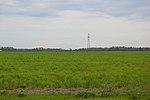Ottawa County, Ohio
1840 establishments in OhioOhio countiesOhio counties in the Western ReserveOttawa County, OhioPages with non-numeric formatnum arguments ... and 2 more
Populated places established in 1840Use mdy dates from August 2017

Ottawa County is a county located in the northwestern part of the U.S. state of Ohio. As of the 2020 census, the population was 40,364. Its county seat is Port Clinton. The county is named either for the Ottawa (Odawa) Indigenous peoples who lived there, or for an Indigenous word meaning "trader".Ottawa County comprises the Port Clinton, OH Micropolitan Statistical Area, which is also included in the Toledo-Port Clinton, OH Combined Statistical Area.
Excerpt from the Wikipedia article Ottawa County, Ohio (License: CC BY-SA 3.0, Authors, Images).Ottawa County, Ohio
Sand Beach Road, Carroll Township
Geographical coordinates (GPS) Address Nearby Places Show on map
Geographical coordinates (GPS)
| Latitude | Longitude |
|---|---|
| N 41.59 ° | E -83.06 ° |
Address
Sand Beach Road
Sand Beach Road
Carroll Township
Ohio, United States
Open on Google Maps








